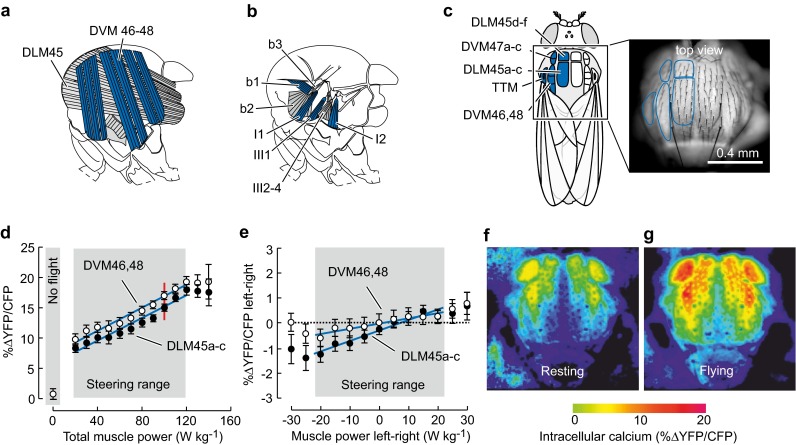Fig. 2.

Calcium signaling in the asynchronous indirect flight muscle (A-IFM) of tethered flying fruit flies. a Morphology of dorsolongitudinal muscle (DLM) and dorsoventral muscle (DVM) inside the fly thorax (side view). b Flight control muscles at the fly’s wing hinge (b1-3, basalare muscles; I1-2 and III2–4, axillary muscles; side view). c Top view on thorax and muscle insertion sites. Image shows fluorescence of electrically activated A-IFM in a fruit fly expressing the calcium probe Cameleon. d Increase in A-IFM intracellular calcium concentration with increasing total A-IFM power output during flight and e calcium signaling and muscle power output (left-minus-right body side) during yaw steering (mean ± SD). Calcium levels are calculated from the ratio between the fluorescence of yellow fluorescent protein (YFP) and cyan fluorescent protein (CFP) expressed in Cameleon. Red line indicates power needed to balance body weight. Data show calcium levels of DVM46, 48 muscles fibers (open circles) and DLM45a–c fibers (closed circles, Demerec 1965). f, g Pseudo-color coded image of calcium levels of muscles inside the thorax (top view) in resting and flying animals.
Figures are adopted from a previous study (Lehmann et al. 2013)
